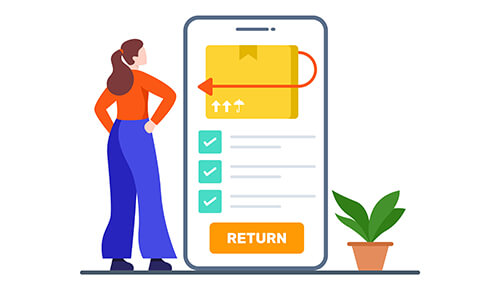The growing strength of e-commerce has made it easier for consumers to add products to their virtual shopping carts. But the disadvantage is that they don’t know what those items look like in person. Hence, the staggering amount of returned purchases.
Product returns or reverse logistics are an inevitable part of entrepreneurship, but it doesn’t have to be the cause of your financial ruin. In fact, it may even be an advantage to your business if you know how to play your cards correctly. A proper returns management process (RMP) is vital for companies of all sizes to lessen the negative impact. If you already have an RMP and think it needs optimization, you’ve come to the right article.
Here are ways you can improve your RMP for your business’s benefit and your customers’ satisfaction:
1. Streamline The Return Process
One of the reasons why reverse logistics is an issue to the business and the consumers is that the process is often unclear. It’s why startups and established companies aren’t shy about using e-commerce tools. One example is a retail management system by ReverseLogix, which you can check out at this link: https://www.reverselogix.com/industries/ecommerce/.
An RMP with detailed instructions and flow benefits both parties. Customers who want to return their orders often ask questions like:
- How do I return this?
- Where do I need to go to return this?
- What else do I need to do to return this?
An unclear process also affects your side of the business. You may not know where the returned parcels are coming from and going to, for example. This situation could lead to mix-ups with outbound shipments and other non-return inbound packages, giving you more reasons to worry.
A streamlined RMP makes things easier for you and your customers. With a smooth and effortless method of returning orders, you’ll likely get a boost in customer satisfaction, too.
2. Form A Team Dedicated To Returns Management
Startups often lack the human resources to manage multiple teams, which is understandable. But once your business grows enough to hire more talent, don’t pass up the opportunity. A team dedicated to reverse logistics saves you time and money and lessens complaints on both sides.
Some companies may use their inventory management team for this role. However, having a separate group for this is wiser, especially if you expect many returns to arrive.
3. Update Your Return Process And Policies
If you have an existing RMP yet are still experiencing challenges, you may need to update it. Switch couriers or change your location for returns if you need to. If the current process is too slow for your liking, find ways to speed it up. Receiving the returned order allows you to sell it again, given that it’s still in excellent condition.
Remember to put your updated return policies on your website or post them on your social media accounts. Make it easy to read and include frequently asked questions to reduce buyers’ time confirming details with your customer support team. A return policy with understandable steps could turn ‘failed’ transactions into more sales.
4. Analyze All Returns
Product returns have two types: controllable and uncontrollable. As an entrepreneur, you must understand the difference between the two to know how to solve each.
Controllable returns can be avoided by improving your RMP and logistics processes. Optimizing product information, updating the packaging, or partnering with a reputable delivery service are methods you can use to control this type of return.
Meanwhile, uncontrollable returns happen when customers lose interest or have a change of heart. While there’s no specific prevention method, you can still lessen the time your customer spends returning the product.
For every returned item, sort them out by reason. Examples would be:
- Wrong product
- Defective or damaged product
- Product doesn’t fit
- Product doesn’t match the description
- Didn’t like the product
- Other reasons
An in-depth analysis of all returned products by type and reason will help you formulate a better solution to avoid this situation happening again.
5. Use Your Physical Stores As A Hub
Not every retail company has a brick-and-mortar store, but if you have one, use it to your advantage. Physical stores are perfect logistics hubs for returned orders. Whether it was bought online or in-store, your onsite team should be able to receive the return order with no problem. This method will make it easier and faster for you to resell the product at the store.
However, you may face issues of receiving out-of-season items, products not in the store’s SKU, or damaged goods. In this scenario, you could resell it at a discount or deliver it back to HQ.
6. Automate The Process
Automation of basic processes has become essential for many businesses in this time. You can automate your RMP to lessen your team’s workload and make the process more efficient. Labeling and generating packages and routing return requests are common RMP tasks that can be streamlined through automation.
Your customer service team can also benefit from an automated RMP. Texts, emails, or a chatbot will reduce the need for customers to call and fill up the lines, speeding up the process for return orders. Automation is also one way to drive more sales using personalized offers based on their returns, improving customer experience in the long run.
Conclusion
Some entrepreneurs think of return orders as a negative thing. But the wise ones know they can play the problem in their favor. As long as you have a clear RMP that your team and your customers understand, returning orders won’t bring dread but rather an opportunity.



